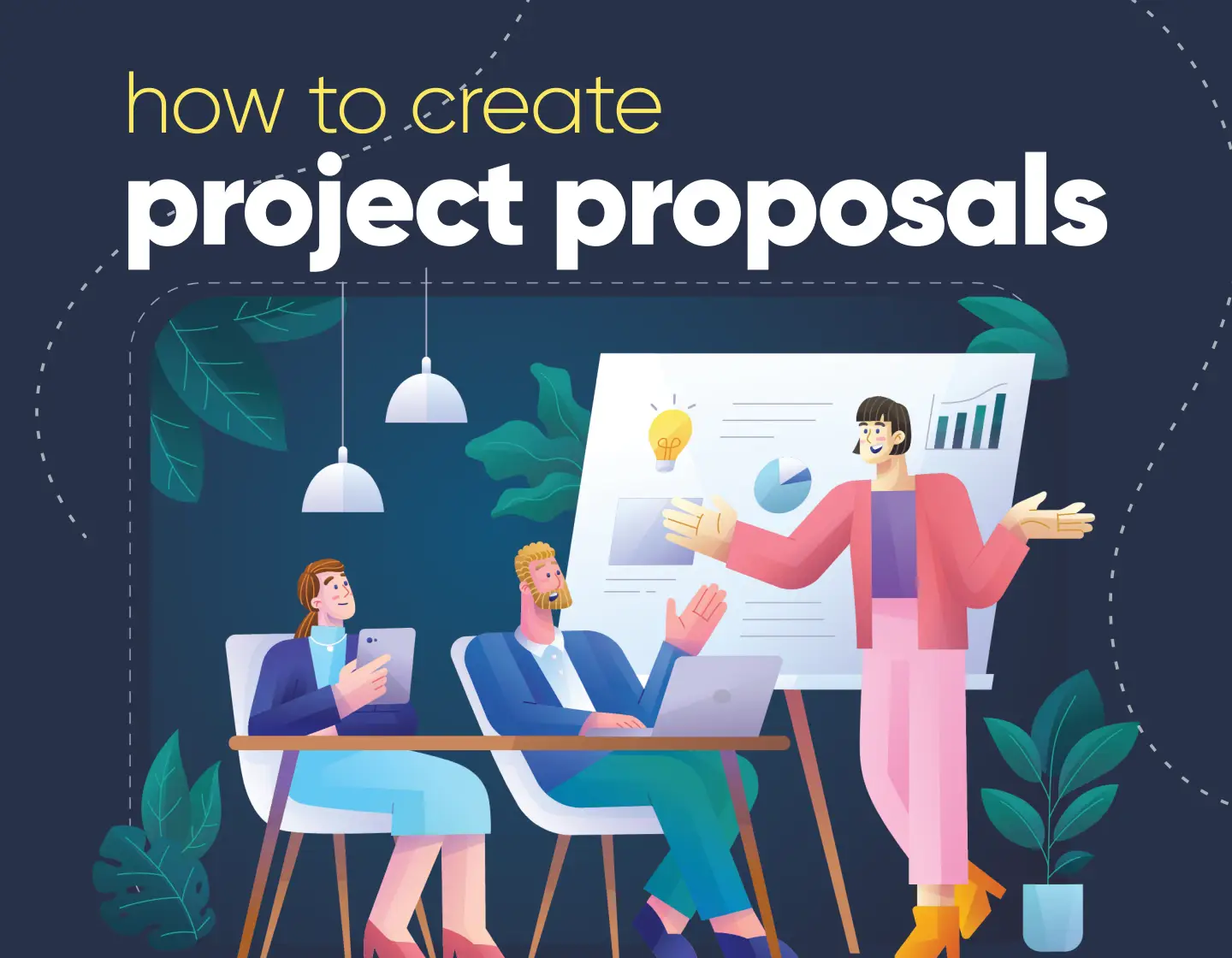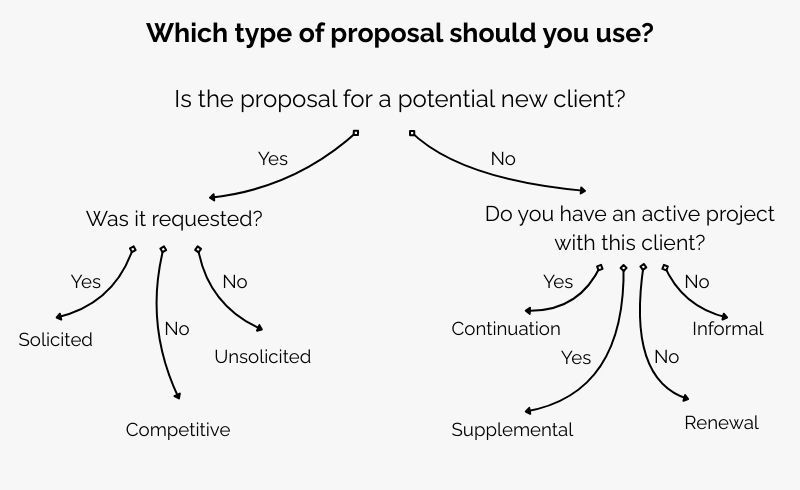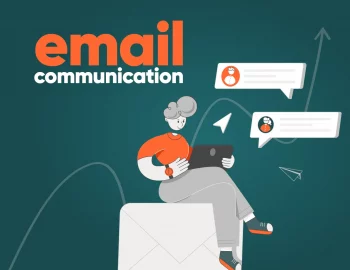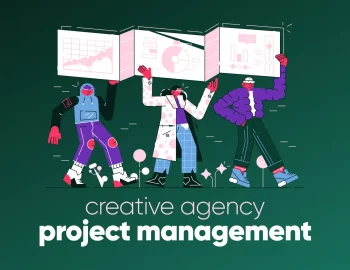A great project proposal shouldn’t just sit in a client’s inbox collecting digital dust. It should excite them, make them feel like they’ve found the right team, and give them all the confidence they need to say, “Let’s do this.” And I’m guessing that’s why you’re here today – to find out how to create a project proposal that’s clear, persuasive, easily put together, and basically perfect, right?
Well then, let’s get to it!
The 5 steps to creating the perfect project proposal
Think of project proposals as not some salesy written document but your golden ticket to winning over clients and setting the stage for a successful collaboration. It outlines the what, why, and how of a project, giving clients a clear picture of your approach and the project’s deliverables, timeline, and costs.
But here’s the most important thing: the perfect project proposal doesn’t just inform – it persuades. It reassures clients that they’re making the right choice by working with you and minimizes the back-and-forth that can slow down approvals.
Get it right, and you’re not just selling a service – you’re selling trust, clarity, and confidence. Ready to craft a proposal that checks all those boxes? Let’s break it down step by step.
1. Lay the groundwork with research
Start with a solid foundation – your proposal isn’t just a pitch, it’s a case built on facts, insights, and real-world examples. Before you dive into the project details, take a step back and answer the why. Why should your audience care? What challenges, gaps, or opportunities exist that your project will address?
By demonstrating that you fully understand the problem (and have the perfect solution), you’re immediately proving your value. A well-researched proposal isn’t just convincing, it also positions you as a trusted expert who gets it. It positions you one step closer to your goals.
2. Show the value: Who benefits and how
You’ve laid out why your idea matters – now it’s time to define who will benefit and what a successful project looks like. This means identifying your audience, outlining the problem you’re solving, and breaking down key deliverables in a way that makes sense to them.
Think about:
- How familiar they are with the problem – do they need background context?
- What they actually want to hear – how does this proposal solve their pain points?
- Potential questions they might ask – anticipate concerns before they arise.
Your deliverables should be crystal clear. Set expectations by including specific timelines, key milestones, and a breakdown of what they’ll receive at each stage. Keep your solutions SMART (Specific, Measurable, Achievable, Realistic, Time-bound), and don’t forget to outline your project budget in as much detail as possible.
A well-structured budget and project schedule show transparency, which builds trust. Be as precise as possible with start and end dates, highlight dependencies, and break project costs into clear categories. Clients want to know what they’re getting and when, so make it easy for them to understand it, and you’ll see how much simpler it becomes for them to say yes!
3. Highlight your standout factor
As much as we’d like to, reinventing the wheel for every project isn’t realistic. But you know what is realistic? Finding a way to make your proposal stand out. Maybe it’s your ability to simplify complex projects into manageable steps. Maybe it’s the way you deliver exceptional client service. Or perhaps it’s your track record of delivering results faster than competitors.
Your unique hook doesn’t have to be groundbreaking – it just has to be yours, and most importantly, you have to be able to deliver what’s promised. Show your strengths, highlight what sets you apart, and make it impossible for potential clients to overlook your expertise.
4. Build a project proposal template to save time
Why start from scratch every time you write a project proposal? A structured project proposal outline and template saves you hours and also ensures consistency and professionalism in every pitch. While each proposal should be tailored to the client, having a core framework in place will certainly streamline the process.
Here’s a good structure worth following:
- Executive Summary – Your project’s elevator pitch: the problem, your proposed solution, and what success looks like.
- Project background – Reference previous projects (both successes and lessons learned) to show why this one matters.
- Requirements – Outline what’s needed – resources, tools, timelines – for the project’s success.
- Solution – Break down your approach, project management steps, and key deliverables.
- Authorization – Identify decision-makers and key stakeholders.
- Appendix – Include any extra materials, team details, or supporting documents.
A polished project proposal template keeps things organized, visually appealing, and easy to customize. Plus, it helps you hit “send” faster without compromising on quality.
Looking for ready-to-use templates? Here are a few great (and free) resources:
- 11 Free Web Design & Development Proposal Templates by HtmlBurger (PDF, Google Docs, Word)
- 20 free proposal templates to ace your pitch by Zapier (Google Docs)
- 17 Free Project Proposal Templates for software, consulting, construction, and engineering by SmartSheet (Excel, Word, PDF, Google Docs)
5. Prepare for client questions
While it may not seem that necessary at first, this step is worth emphasizing because a successful project proposal isn’t just about what you say to potential and existing clients – it’s about how well you handle their concerns. Clients will have questions, and the better prepared you are, the smoother your discussions will go.
As you finalize your proposal, put yourself in the client’s shoes:
- What might they need clarification on?
- Are there any potential risks they’ll want to address?
- What is their success criteria?
Taking the time to brainstorm answers not only builds confidence but also strengthens your credibility. A well-prepared project manager doesn’t just present solutions – they own them.
That’s it – five key steps to creating an effective project proposal and delivering it perfectly! Still, if you want to dive deeper into the different types of proposals and when to use them, keep reading…
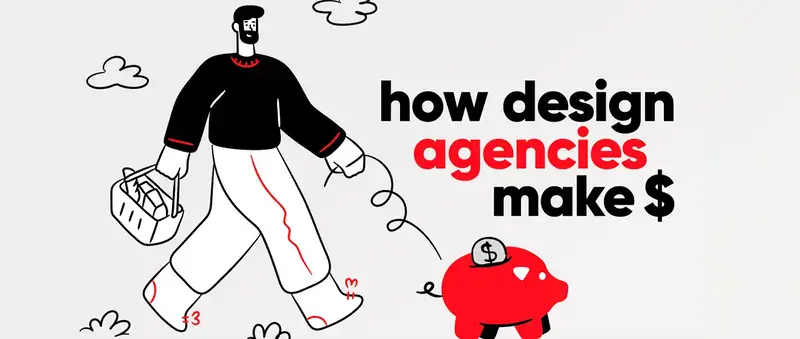
What are the types of project proposals (and when to use them)
One proposal can’t be perfect for each project – depending on the circumstances, the client, and the scope of work, you’ll need to tweak your approach to creating it. Using the right type at the right time can mean the difference between a swift approval and a never-ending saga. Let’s break down the main types and when to use each one:
1. Solicited proposals – When the client asks for it
This is the easiest starting point because the client is already interested – they’ve requested a proposal, either through a formal RFP (Request for Proposal) or an informal inquiry. Your job? Follow their guidelines, address their needs clearly, and make it as easy as possible for them to choose you.
Use this when:
- A client has asked you to submit a proposal.
- You’re responding to an RFP with specific requirements.
Pro Tip: Since you already know what the client is looking for, tailor your proposal to their exact specifications and highlight why you’re the best fit.
2. Unsolicited proposals – When you spot an opportunity
Sometimes, the best projects are the ones you initiate. Unsolicited project proposals are proactive pitches you send to potential clients who haven’t explicitly asked for one, but could benefit from your expertise. Since they weren’t expecting it, you’ll need to make a strong case upfront and quickly capture their interest.
Use this when:
- You’ve identified a gap or opportunity in a company’s operations, branding, or strategy.
- You want to pitch a new service or collaboration.
- You’re trying to build a relationship with a potential client.
Pro Tip: Keep it concise and results-focused. Since the client wasn’t actively looking, they won’t spend much time reading, so to convince stakeholders, make your value evident from the start.
3. Informal project proposals – When there’s no need for formalities
Not every proposal needs to be a long, formal document. If you have an existing relationship with a client or if the project is straightforward, an informal proposal – often sent as a simple email or short PDF – can be just as effective.
Use this when:
- You’re working with a returning client who doesn’t need a full breakdown.
- The project is small or low-risk.
- The client prefers a quick, no-fuss proposal.
Pro Tip: Even though it’s informal, keep it structured. A clear outline of deliverables, project timelines, and costs will prevent misunderstandings later.
4. Continuation proposals – When you want to keep the momentum going
A continuation proposal is all about keeping things on track. If a project has already been approved and is underway, this type of proposal serves as an official update, outlining the project’s progress, upcoming phases, and any minor adjustments needed. Since it builds on existing documentation, it’s one of the simplest proposals to create.
Use this when:
- A project is moving into its next phase.
- You need to document updates without re-pitching the entire idea.
- The client requires a formal progress check-in before proceeding.
Pro Tip: Keep it straightforward. Stick to key updates, upcoming deliverables, and any necessary refinements to ensure a smooth continuation.
5. Renewal project proposals – When you need to restart a paused project
Unlike a continuation proposal, a renewal project proposal is used when a project has stopped (either due to funding issues, changing priorities, or other interruptions). Your job here is to prove that the project is still worth pursuing and that the return on investment justifies restarting it.
Use this when:
- A project was put on hold, and you want to bring it back.
- Additional funding is required to restart work.
- You need to show the long-term value of continuing the project.
Pro Tip: Focus on the impact. Highlight past successes, address previous issues, and present a compelling case for why now is the right time to restart.
6. Supplemental project proposals – When you need more resources
Sometimes, even the best-laid plans need adjustments. A supplemental proposal is used when a project requires additional resources – whether it’s extra budget, more team members, or an extended timeline. Your goal here is to justify why these changes are necessary and demonstrate how they’ll improve the project’s outcome.
Use this when:
- Unexpected challenges have increased the project’s scope.
- You need additional funding to maintain project quality.
- The client requests extra features or revisions that require more time and resources.
Pro Tip: Be transparent. Clearly outline the reasons for the extra resources, provide a revised timeline, and show how these adjustments will benefit the client. Keeping communication open ensures trust and a smoother approval process.
7. Competitive proposals – When you need to stand out
In some cases, you’ll be submitting a proposal alongside several other agencies. These proposals need to be sharp, persuasive, and visually compelling because you’re not just presenting a plan – you’re proving why your agency is the best choice.
Use this when:
- You’re bidding for a project with multiple competitors.
- The client is evaluating several vendors.
- You need to differentiate yourself from others offering similar services.
Pro Tip: Go beyond just listing your services – showcase your unique approach, success stories, and what sets you apart. A well-crafted proposal can make a big difference in a competitive scenario.
Which proposal should you use?
Choosing the right type of proposal is just as important as writing it well. Consider the client’s expectations, the complexity of the project, and the level of competition you’re up against. Once you have the right format in mind, you can tailor your messaging, structure, and design to maximize your chances of winning the deal.
That wraps up the different types of project proposals and when to use them! Now, you’re fully equipped to create the perfect circumstances for a win, choosing the right approach, crafting a strong project proposal, and confidently presenting it to your clients.
Bottom line?
Creating the perfect project proposal isn’t just about listing deliverables and pricing – it’s about telling a compelling story, proving your value, and making it impossible for the client to say no. The key is clarity, strategy, and a touch of persuasion.
Now that you know how to create the perfect project proposal and which type to use, it’s time to put it into action and win those approvals. The next big project is just one great proposal away!
While getting ready to craft proposals that seal the deal, have a look at our other helpful articles:
- What to Do When a Client Doesn’t Pay: Scripts, Steps & Smart Boundaries
- How to Get Clients to Pay on Time: 10 Golden Techniques
- How to Increase Customer Lifetime Value & Win Repeat Clients
- The Ultimate Website Design Questionnaire Free Template
- Free Branding Design Questionnaire Template – Editable & Ready To Use


